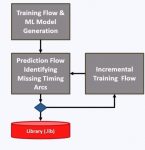You are currently viewing SemiWiki as a guest which gives you limited access to the site. To view blog comments and experience other SemiWiki features you must be a registered member. Registration is fast, simple, and absolutely free so please,
join our community today!
Physical verification is an important and necessary step in the process to tapeout an IC design, and the foundries define sign-off qualification steps for:
- Physical validation
- Circuit validation
- Reliability verification
This sounds quite reasonable until you actually go through the steps only to discover that some of the … Read More
In my semiconductor and EDA travels I’ve enjoyed visiting engineers across the USA, Canada, Europe, Japan, Taiwan and South Korea. I’ll never forget on one trip to South Korea where I was visiting a semiconductor company and upon reaching the lobby a security officer asked me to take out my laptop computer, because he wanted me to… Read More
Mergers and acquisitions are just a fact of modern business life, so the semiconductor, IP and EDA industries all can benefit, but only when the two companies have complementary products with some actual synergy. Cadence acquired OrCAD back in 1999, adding a Windows-based PCB tool to their product lineup, and here in 2019 some … Read More
Three years ago my youngest son purchased a $17 smart watch on eBay, but then my oldest son read an article warning about how that watch would sync with your phone, then send all of your contact info to an address in China. My youngest son then wisely turned the watch off, and never used it again. Hackers have been able to spoof and hide … Read More
Autonomous vehicle progress is in the daily news, so it’s quite exciting to watch it develop with the help of SoC design, sensors, actuators and software from engineering teams spanning the entire globe. Tesla vehicles have reached Level 2 autonomy, Audi e-tron is at Level 3, and Waymo nearly at Level 5 with robot taxis being… Read More
Every week I read headlines about the progress of autonomous vehicles, and the inevitable questions began to arise, like, “Just how safe is this AV?”, or “Is this new ADAS feature trustworthy?” The automotive industry has already setup the ISO 26262 functional safety standard, and we’ve blogged… Read More
Most EDA tools started out running on mainframe computers, then minicomputers, followed by workstations and finally desktop PCs running Linux. If your SoC design team is working on a big chip with over a billion transistors, then your company likely will use a compute farm to distribute some of the more demanding IC jobs over lots… Read More
My first DAC was in 1987 so I’ve seen our industry expand greatly over the years, and I expect that #57DAC on July 19-23, 2020 in SFO to be another exciting event to attend for semiconductor professionals from around the globe. What makes DAC so compelling for me to visit are the people, exhibitors, panel discussions, technical… Read More
NVIDIA designs some of the most complex chips for GPU and AI applications these days, with SoCs exceeding 21 billion transistors. They certainly know how to push the limits of all EDA tools, and they have a strong motivation to automate more manual tasks in order to quicken their time to market. I missed their Designer/IP Track Poster… Read More
I often blog about a specific EDA tool, or an IP block, but the way that SoC design teams approach their designs and then use tools and IP can either be a manual, ad-hoc process, or part of something that is well-documented, following a design methodology. Back in the 1980’s while at Intel our team first created a design methodology… Read More


















AI RTL Generation versus AI RTL Verification